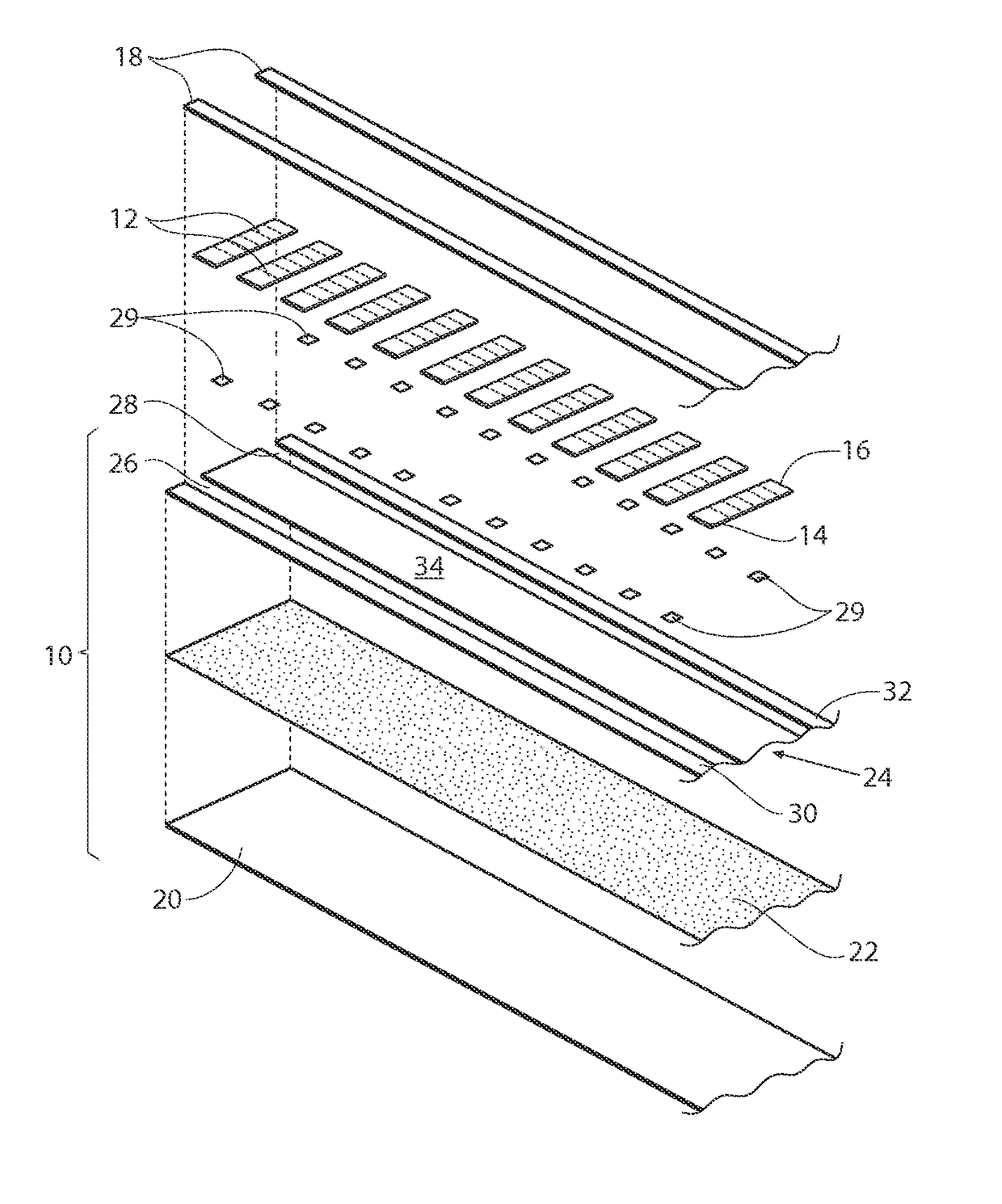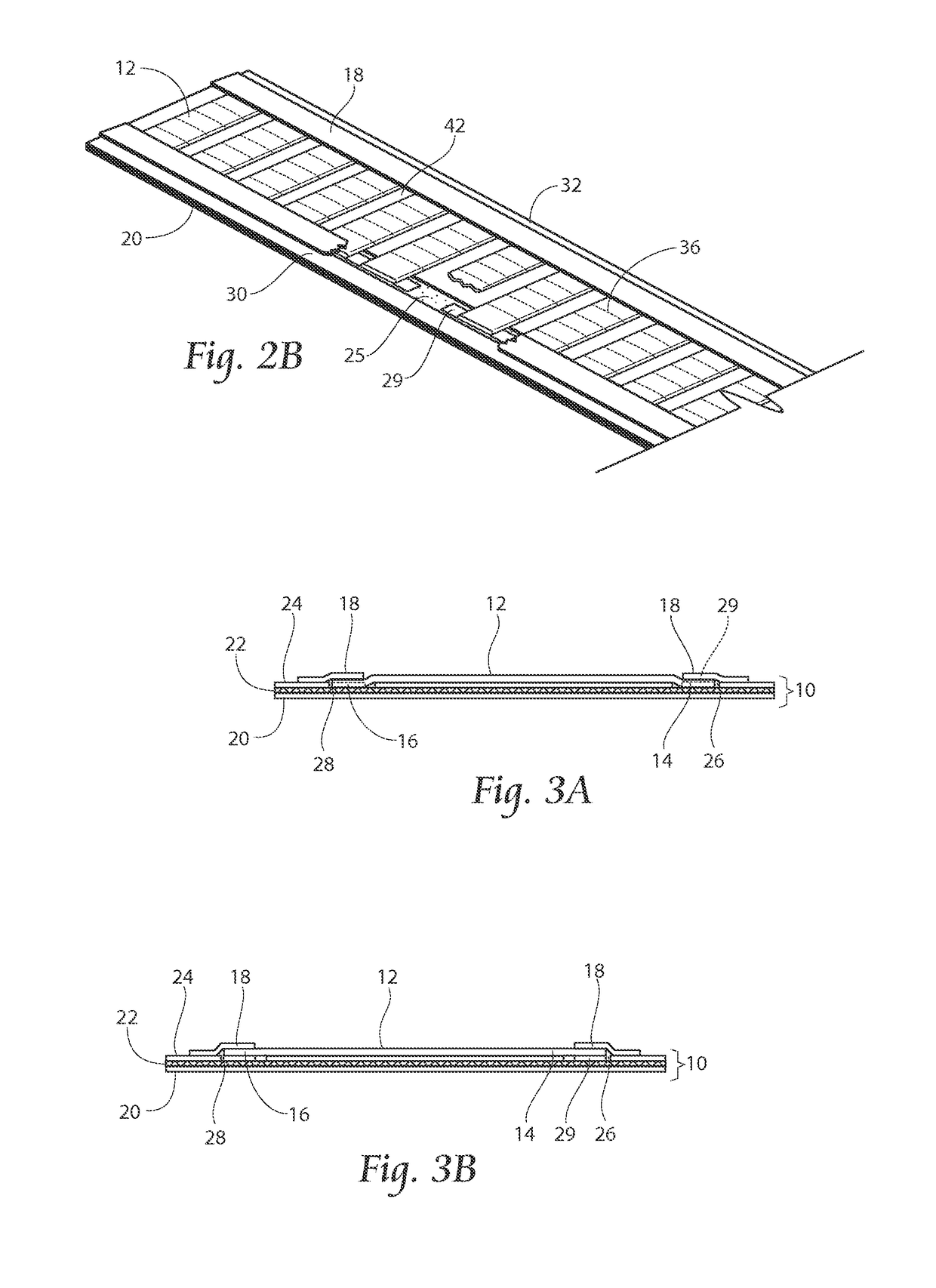Wire label with carrier
a carrier and wire technology, applied in the field of wire labels, can solve the problems of distorted images, bulky carrier strips, difficult to remove labels, etc., and achieve the effect of improving the removal of wire labels
- Summary
- Abstract
- Description
- Claims
- Application Information
AI Technical Summary
Benefits of technology
Problems solved by technology
Method used
Image
Examples
Embodiment Construction
[0024]Although the disclosure hereof is detailed and exact to enable those skilled in the art to practice the invention, the physical embodiments herein disclosed merely exemplify the invention which may be embodied in other specific structure. While the preferred embodiment has been described, the details may be changed without departing from the invention, which is defined by the claims.
[0025]FIG. 1 shows a top plan view of a carrier strip 10 and a plurality of wire labels 12 to be printed adhered on top of the carrier strip 10. Like parts will be referred to with like reference numerals. The wire labels 12 have a first end 14 and a second end 16 and are arranged substantially laterally to the carrier strip 10. The spacing and size of the wire labels 12 may be of any desired size or orientation. The wire labels 12 are preferably longitudinally spaced from one another at equal intervals. A pair of adhesive tapes 18 is placed respectively over the first end 14 and the second end 16 ...
PUM
 Login to View More
Login to View More Abstract
Description
Claims
Application Information
 Login to View More
Login to View More - R&D
- Intellectual Property
- Life Sciences
- Materials
- Tech Scout
- Unparalleled Data Quality
- Higher Quality Content
- 60% Fewer Hallucinations
Browse by: Latest US Patents, China's latest patents, Technical Efficacy Thesaurus, Application Domain, Technology Topic, Popular Technical Reports.
© 2025 PatSnap. All rights reserved.Legal|Privacy policy|Modern Slavery Act Transparency Statement|Sitemap|About US| Contact US: help@patsnap.com



